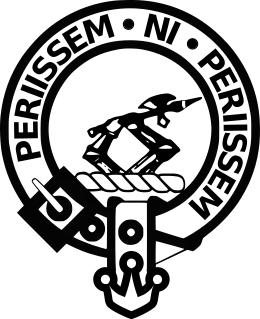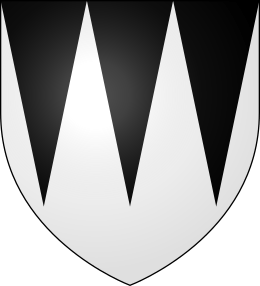Clan Anstruther facts for kids
Quick facts for kids Clan Anstruther |
|
|---|---|

Crest: Two arms in armour holding a pole-axe with both hands gauntleted Proper
|
|
| Motto | Periissem ni periissem (I would have perished had I not persisted) |
| Profile | |
| Region | Lowlands |
| District | Fife |
| Chief | |
 |
|
| Tobias Alexander Anstruther of that Ilk | |
| Chief of the Name and Arms of Anstruther | |
| Seat | Balcaskie House. |
Clan Anstruther is a historic Scottish clan from the Lowlands of Scotland. A "clan" is like a large family group, often with a shared history and a chief. This clan is known for its long history in the Fife area.
Contents
Clan History
Where Did the Name Anstruther Come From?
The Anstruther clan gets its name from the town of Anstruther in Scotland. The name itself comes from an old Gaelic phrase. It means "the little stream." So, the family took their name from the place where they lived.
Early Beginnings of the Clan
The story of Clan Anstruther began in the early 1100s. A Scottish king named Alexander I of Scotland gave land in Anstruther to a man named William de Candela. Historians believe William de Candela might have come from a noble family in Normandy, France, or even Italy. It is thought that his father helped William I of England, and William de Candela then came to Scotland.
William de Candela's son, also named William, was very generous. He gave land to the monks at Balmerino Abbey. The place where the Scottish Fisheries Museum stands today was once a gift from this William. Later, his son Henry started using "de Aynstrother" as his name. This showed that the family was now strongly connected to the Anstruther lands.
Henry Anstruther was an adventurous person. He joined Louis IX of France on a Crusade, which was a religious journey and military campaign. He also promised his loyalty to King Edward I of England twice, in 1292 and 1296. This was a common practice for Scottish nobles at the time.
The 1400s and 1500s
In 1483, Andrew Anstruther of Anstruther was given the right to be a baron. This meant he had special rights over his land. He also fought bravely against the English in the Battle of Flodden in 1513. This battle was part of the Anglo-Scottish Wars, a series of conflicts between Scotland and England.
Andrew Anstruther married Christina Sandilands. She was a descendant of Princess Jean, a daughter of Robert II of Scotland. This connection showed the Anstruther family's important links to Scottish royalty. Andrew's second son, David, fought in the Battle of Pavia in 1520. He served with the French Scots Regiment for Francis I of France. This branch of the family eventually ended in 1928.
A great-great-grandson of Andrew, Sir James Anstruther, became a close friend and companion to the young King James VI of Scotland. King James VI gave Sir James a special job: Hereditary Grand Carver. This means the head of the Anstruther family still holds this title today. In 1595, Sir James also became Master of the Household for the King.
The 1600s and the Civil War
When King James VI of Scotland also became King James I of England in 1603, it was called the Union of the Crowns. Sir James Anstruther's elder son, William, went with the King to London. There, William was made a Knight of the Order of the Bath, a special honor.
Sir James's second son, Sir Robert, became an important diplomat. He worked for both King James I and King Charles I, representing them in other countries.
Sir Phillip Anstruther, a son of Sir Robert, was a Royalist during the English Civil War. This war was a big conflict between those who supported the King (Royalists) and those who supported Parliament. Phillip Anstruther even hosted King Charles II at Dreel Castle after the King's coronation in 1651.
However, Phillip Anstruther was later captured after the Battle of Worcester in 1651. His lands were taken away, and he was not included in Cromwell's Act of Grace, which offered forgiveness to some Royalists. But when the monarchy was brought back by Charles II, Phillip's estates were returned to him. Phillip's brother, Sir Alexander Anstruther, married Jean Leslie, whose father was General David Leslie, Lord Newark, a famous military leader.
Clan Chief
The current leader of Clan Anstruther is Tobias Alexander Campbell Anstruther of that Ilk and of Balcaskie. He is the younger son of Sir Ian Anstruther. The clan chief is the official head of the family.
Clan Castles
The main home of the Clan Anstruther chief is Balcaskie House in Fife. This beautiful house was likely built around 1670 by a famous architect, Sir William Bruce. The Anstruthers also own Airdrie House and Newark Castle, both located in Fife.
Clan Profile
- Arms: Argent, three piles issuing from the chief sable (This is a description of the clan's shield design.)
- Crest: Two arms in armour holding a pole-axe with both hands gauntleted Proper (This is the symbol above the shield.)
- Motto: Periissem ni periissem (This Latin phrase means "I would have perished had I not persisted.")
See also

